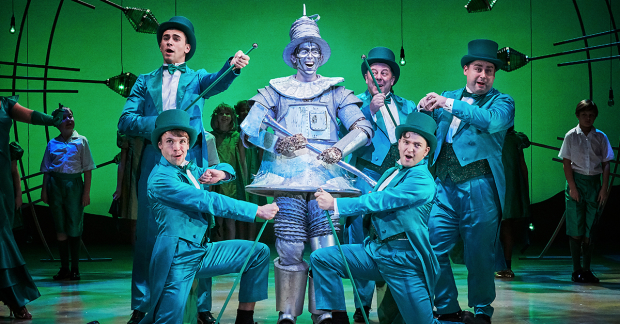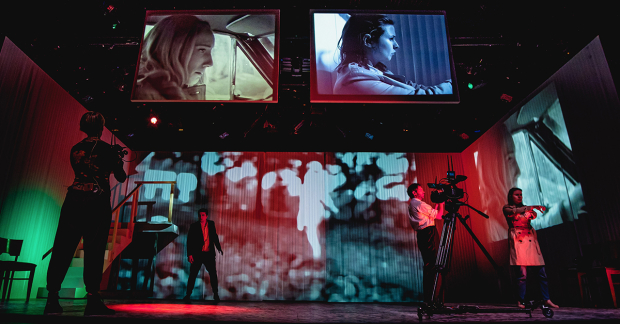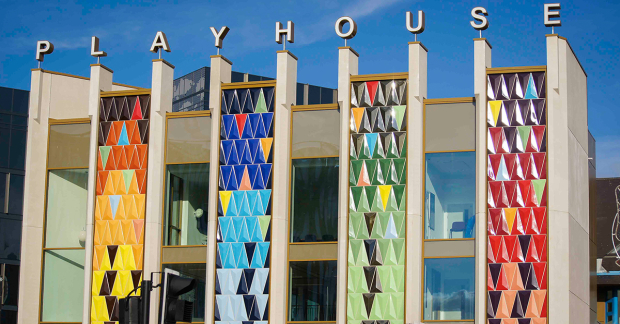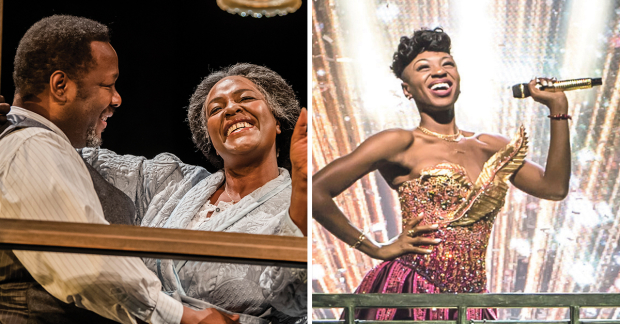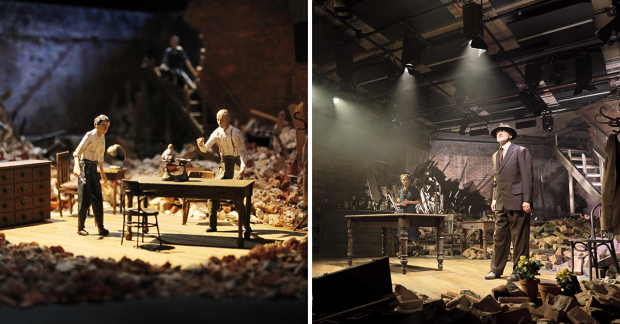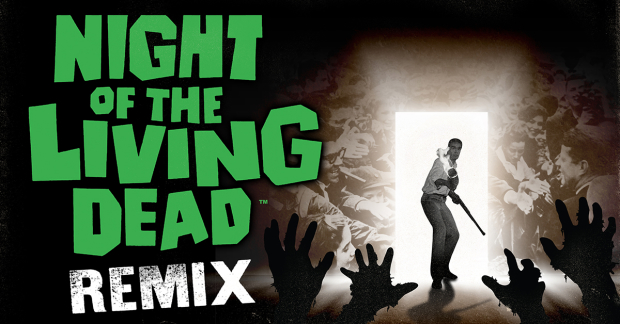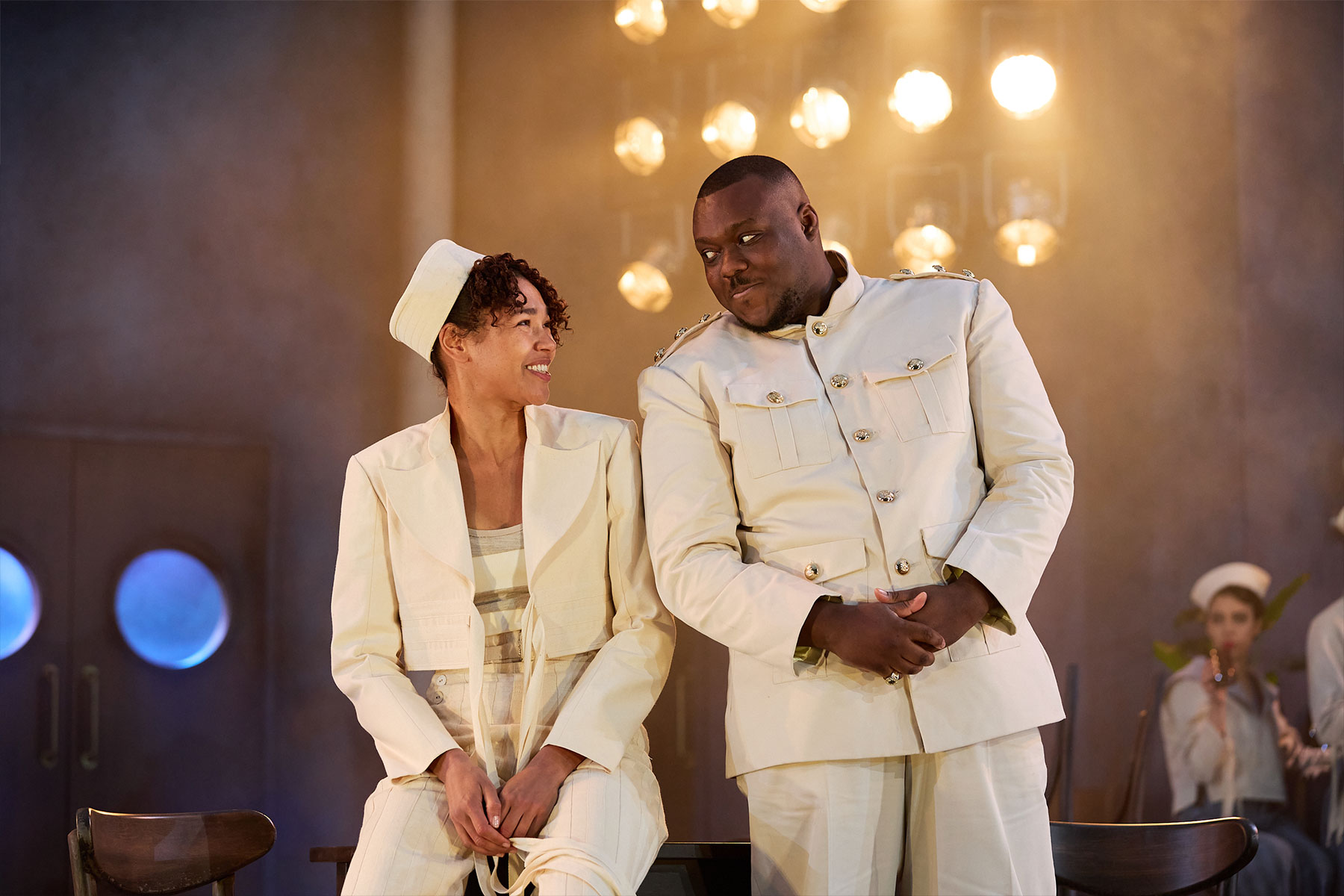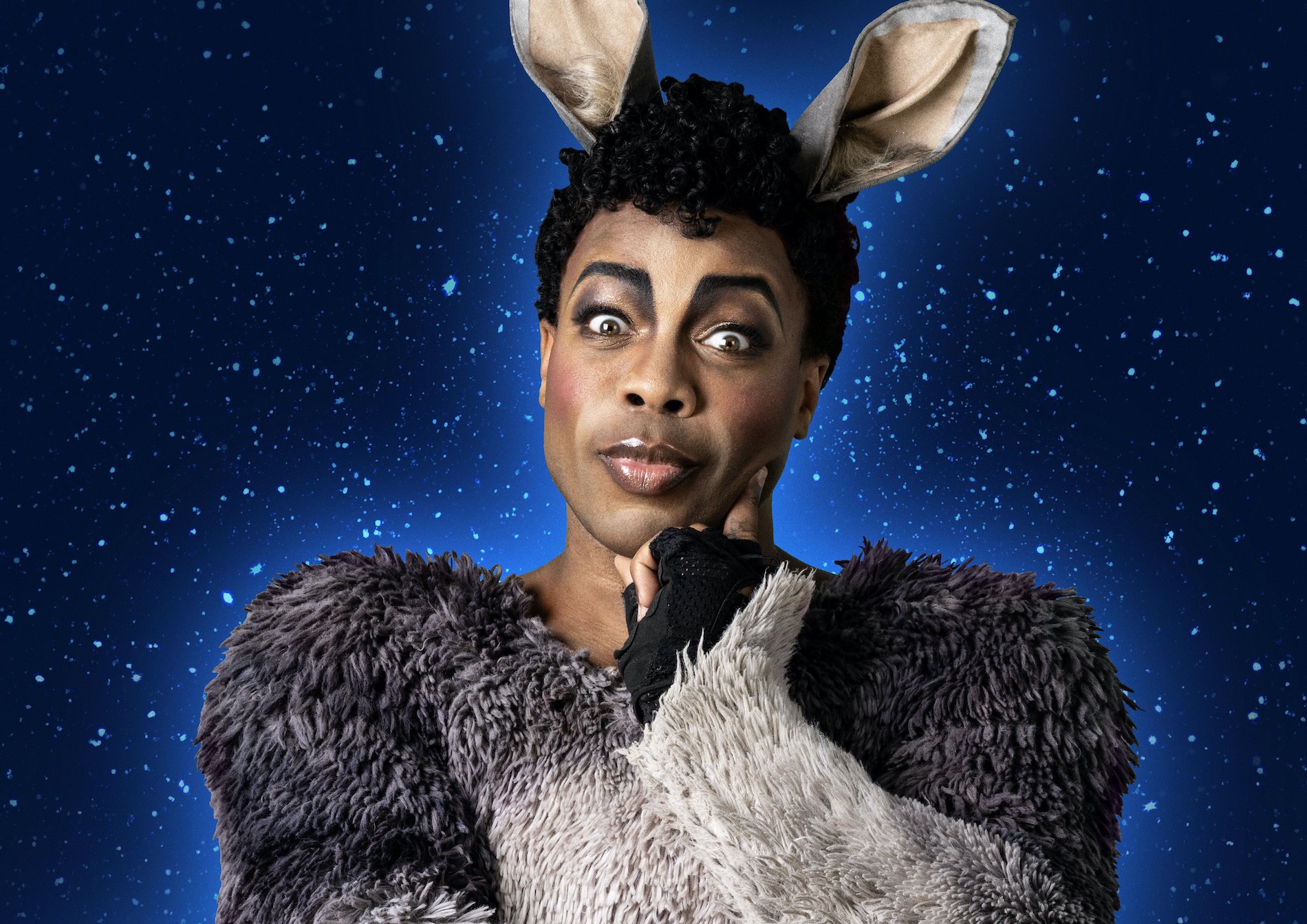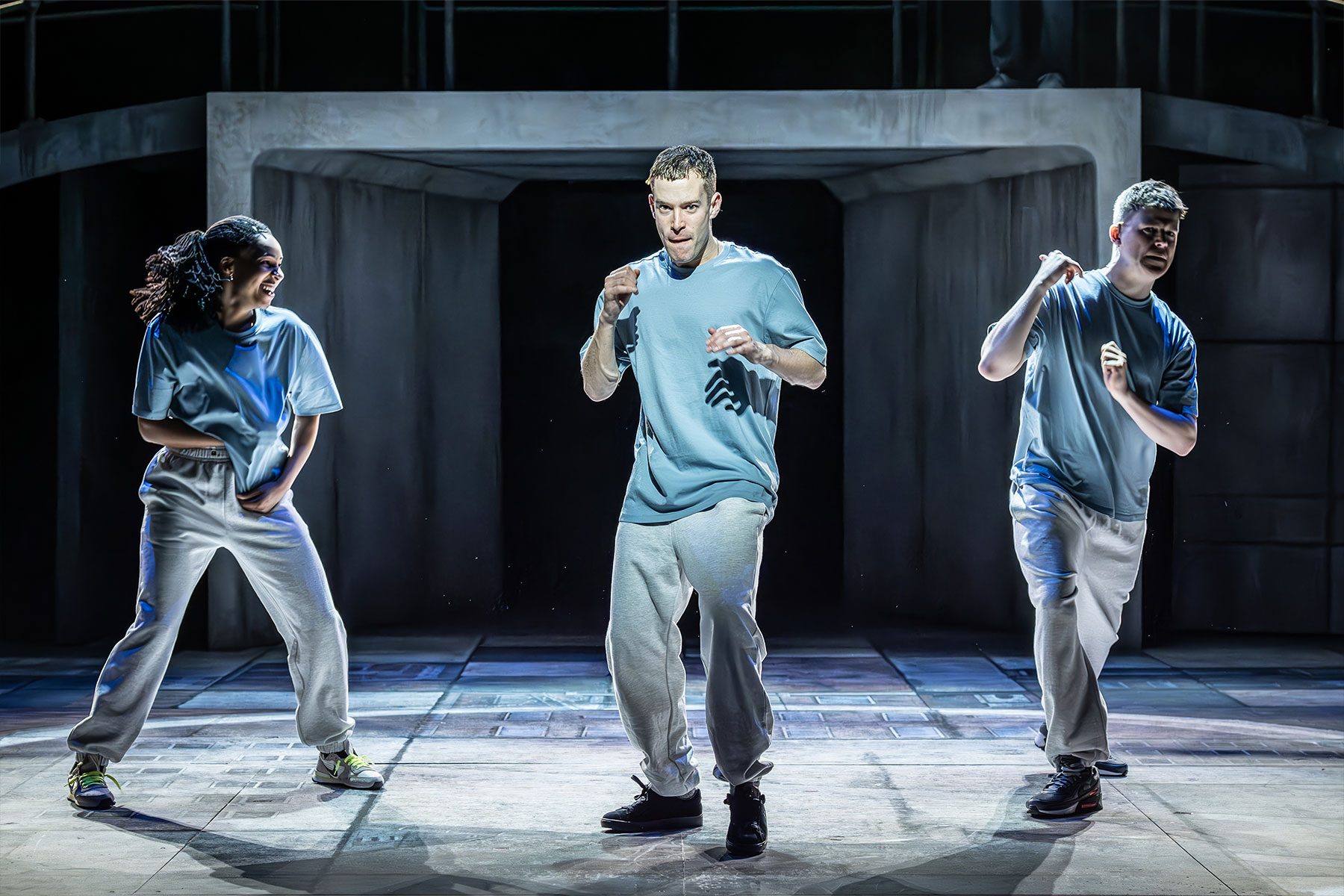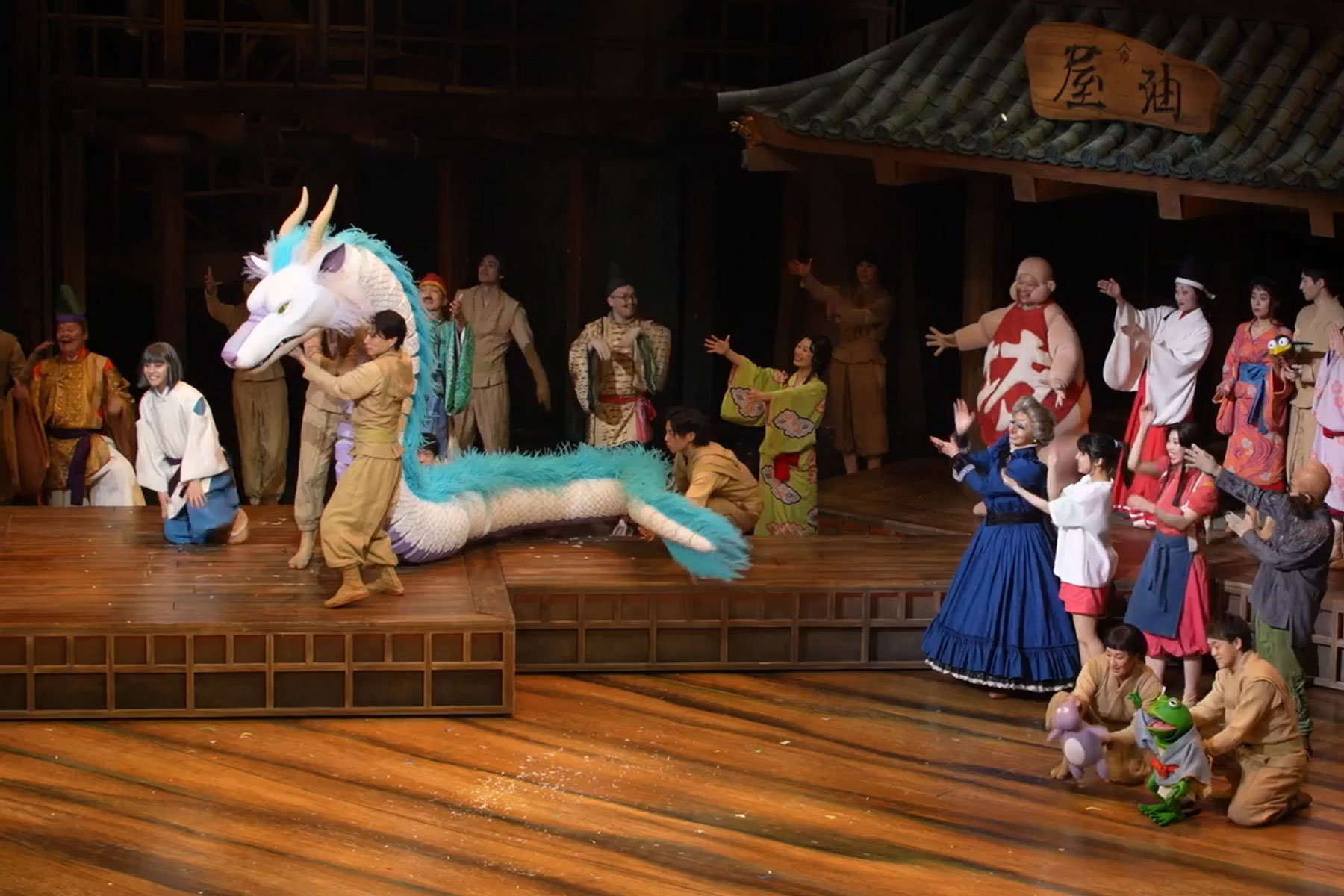Review: Night of the Living Dead – Remix (Leeds Playhouse and tour)

© Edward Waring
Let's start with what is beyond dispute. Imitating the dog's production of Night of the Living Dead – Remix, co-produced with Leeds Playhouse, is innovative, imaginative and very strange. As it makes its way on a tour of eight theatres, ending near the end of March, I expect audiences from Exeter to Dundee will hold wildly differing views on the piece.
Night of the Living Dead was a low-budget 1968 horror film directed by George Romero which has become a cult classic for two main reasons. It was one of the first of the zombie films (though Romero called them "ghouls") and it took the almost unprecedented step of casting a black actor in the most heroic and sympathetic role among an otherwise white cast. Though this was not pre-planned, the fact that Romero and his buddies in Image Ten, the homespun production company, accepted that a black actor was best for the role constituted a liberalism that was too much for distributors in some cities.
The plot of Night of the Living Dead is hardly complicated. As the living dead stalk rural Pennsylvania, seven people hole up in a farmhouse and then it's all about ghouls multiplying exponentially, the seven falling out about how to protect themselves, radio and television broadcasting increasingly alarmist bulletins and the sheriff's posse gunning down anything that moves, be it living or living dead.
Imitating the dog's version is in the hands of its three artistic directors: Andrew Quick and Pete Brooks co-direct and Simon Wainwright looks after video design. It is based upon two main premises. One is the attempt to reproduce the film shot by shot with minimal resources. At the start a nearly bare stage has a solid staircase, several cameras, odd sticks of furniture and a table for Foley effects. Two screens above show (for the most part) the original film without sound and the scene as played on stage for the cameras. There are plenty of impressive visual coups, aided by the dramatic effects playing on the back- and side-cloths, but there are also too many laughs (or at least there were with the smart press night audience) which are either pretty corny (a rather pathetic model car, for instance) or, I trust, accidental, as when the close-ups of on-stage actors out-melodram those in the film.
The 1960s were a terrible era for American liberals (or for right-wingers, depending on your viewpoint): assassinations of JFK, his brother Robert and Martin Luther King, the horrors of the Vietnam War. Quick and Brooks see Night of the Living Dead as a protest against these and cleverly incorporate this into the narrative, so that we can simultaneously watch a dialogue-free section of the film while an interview with a witness to Robert Kennedy's assassination is questioned on stage and the original interview spreads without sound across the back cloth.
This makes an emotional impact only when film of the Vietnam War plays to accompany the attempted getaway that ends with a truck in flames. Then, even more effectively, Morgan Bailey delivers (beautifully) a pot-pourri of the most inspiring speeches of King and the Kennedys as the film shows the redneck posse approaching and Matt Prendergast channels his inner Rod Steiger from In the Heat of the Night as he prowls the stage looking for something to shoot.
The creativity of Andrew Crofts (lighting) and James Hamilton (composer) and the dedication of all concerned, including a disciplined team of seven actors, are not to be questioned, but does it all work? My judgement, delivered from a painful position on top of the fence, is – often enough to justify the attempt, but certainly not always.



